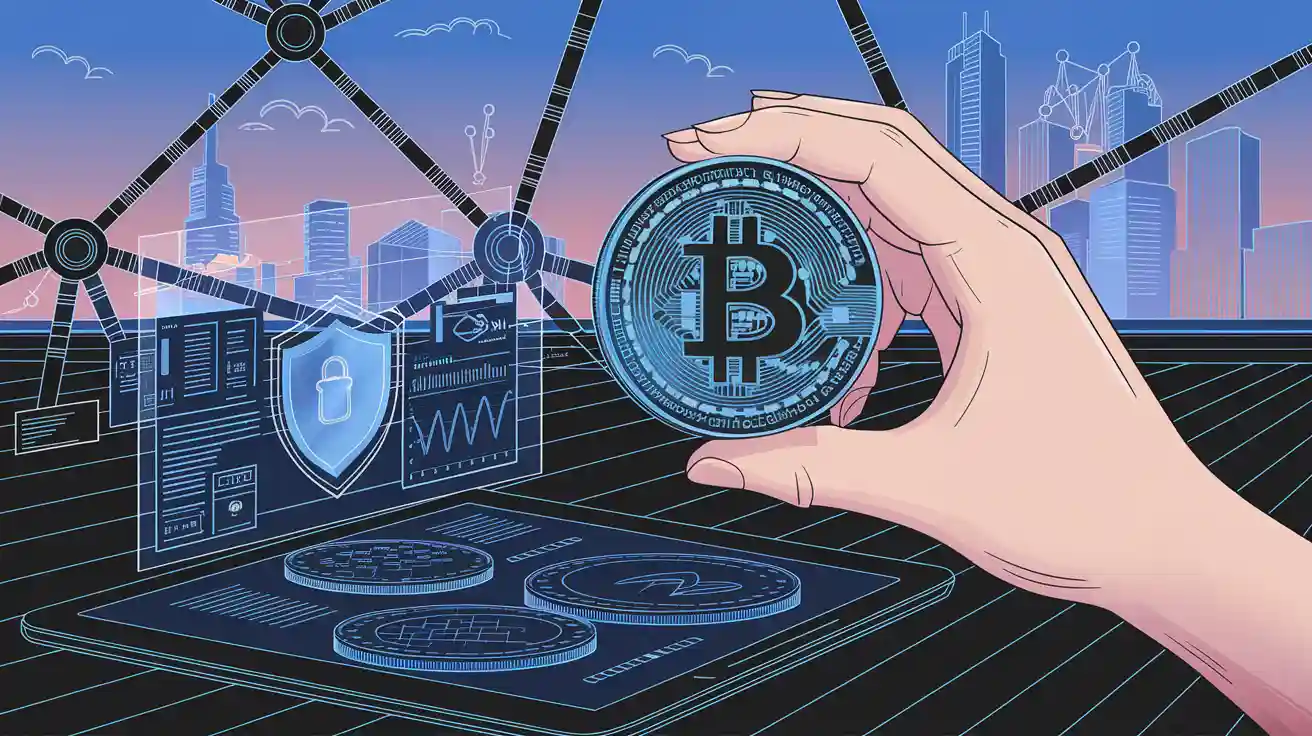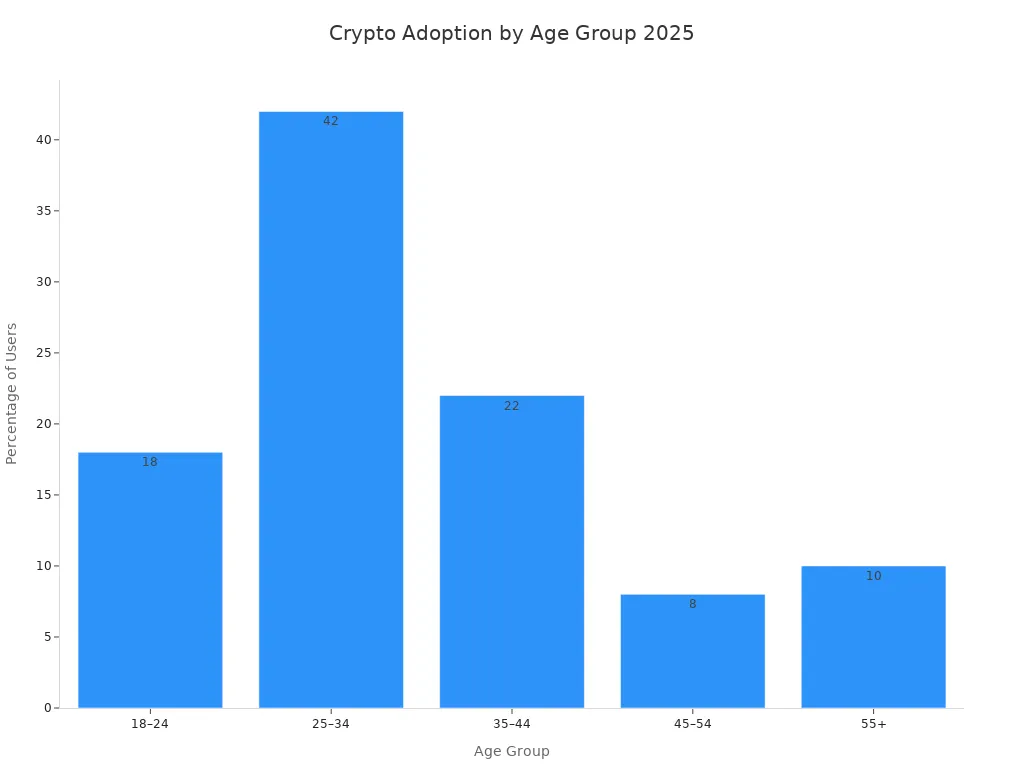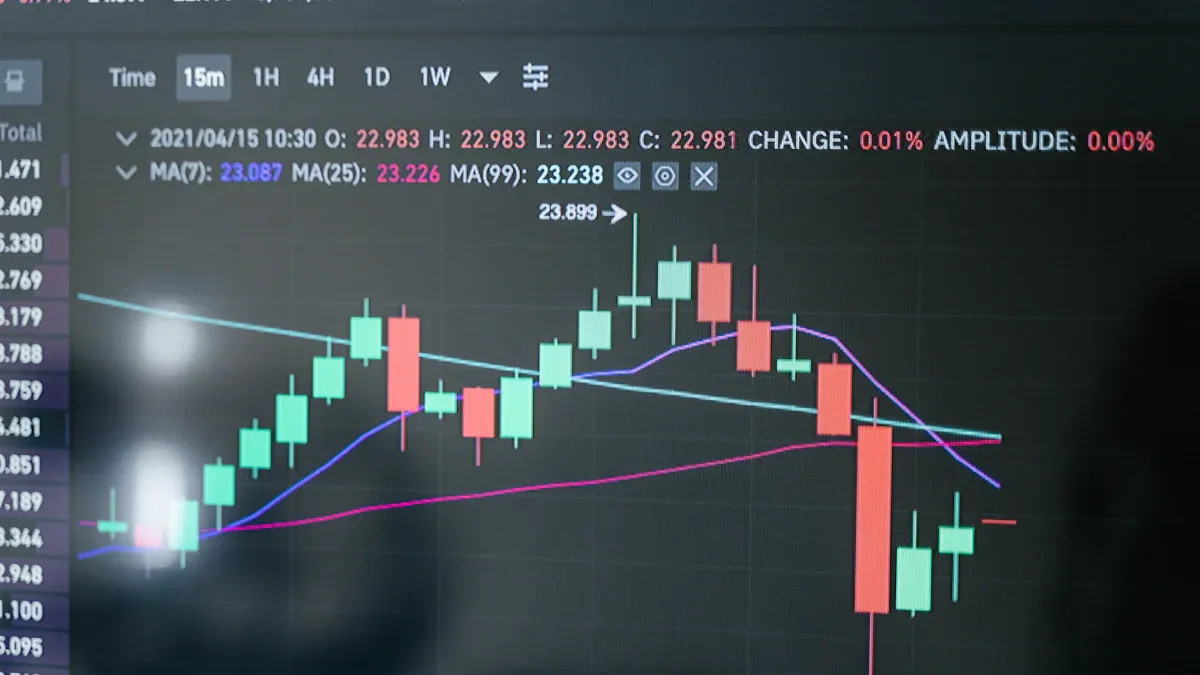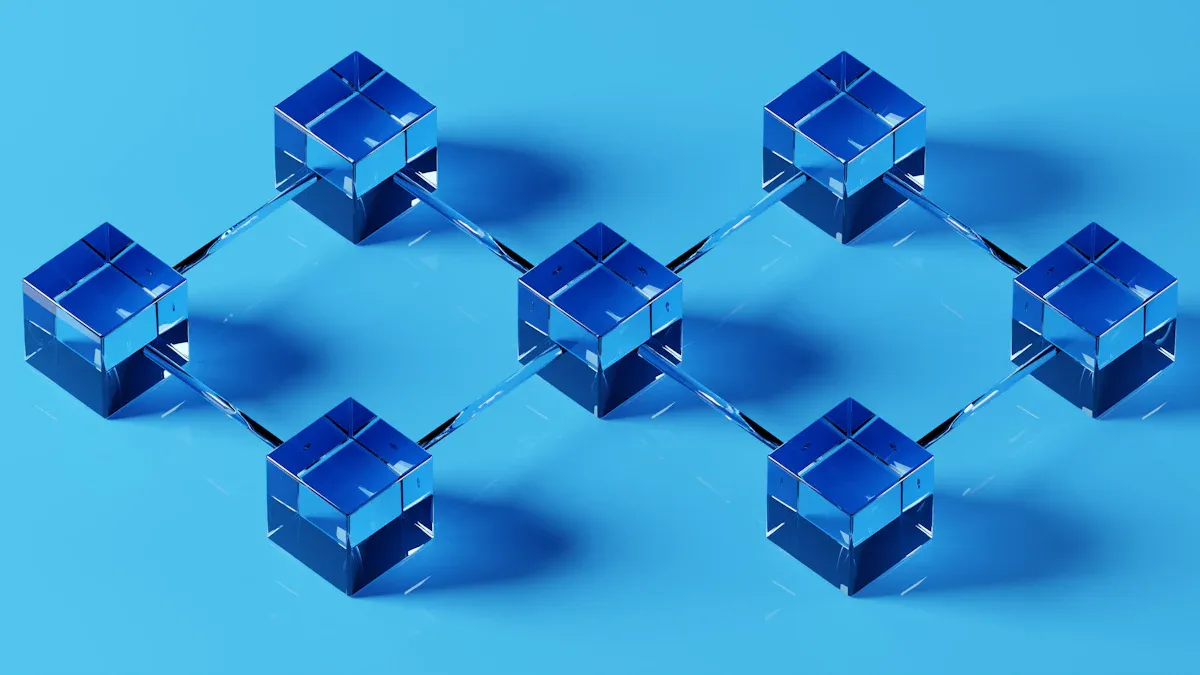What Is Understanding Cryptocurrency and Blockchain Technology in 2025
2025-07-14 07:08:48
Cryptocurrency is a type of digital money that people can trade or use to pay for goods and services. It differs from traditional money, and understanding cryptocurrency and blockchain technology is key to grasping how it works. Blockchain technology supports cryptocurrency by securely recording every transaction. Each transaction is stored in a block, and these blocks are linked together to form a chain known as a ledger. This ledger is transparent and accessible to everyone, which enhances security and trust. In 2025, having a solid understanding of cryptocurrency and blockchain technology is essential as more individuals and businesses worldwide adopt them. The concept of decentralization means no single group controls the system, helping to prevent fraud and ensuring transparency for all users.

Understanding Cryptocurrency and Blockchain Technology

Cryptocurrency Basics
Cryptocurrency is digital money. It does not need a central authority. People use it to buy things or pay for services online. You can also trade it with others. Cryptocurrency is not like cash or coins. It only exists on computers as part of a blockchain. This makes it different from the money in your wallet or bank.
Some things make cryptocurrency special:
- It uses codes to keep transactions safe.
- No government or bank controls it.
- It works on digital ledgers, not through banks.
- Transactions are on a public blockchain, so everyone can see them.
- Most cryptocurrencies have a set amount, which helps stop inflation.
| Characteristic | Cryptocurrency | Traditional Fiat Currency |
|---|---|---|
| Issuance and Control | Decentralized; not issued or controlled by any government; governed by coin holders or protocols | Issued and controlled by governments or central banks |
| Physical Form | Purely digital; exists only on blockchain | Exists in physical form as bills and coins |
| Border and Permission | Permissionless and borderless; no personal data required | Restricted by national borders; often requires identity verification |
| Intermediaries | Peer-to-peer transactions; no need for banks or middlemen | Transactions typically require banks or payment intermediaries |
| Transaction Finality | Transactions are irreversible and immutably recorded on blockchain | Transactions can be reversed or disputed through intermediaries |
| Supply | Often capped or controlled supply; cannot be arbitrarily increased | Supply can be increased by government printing money |
| Security | Secured by cryptography and consensus mechanisms | Security depends on centralized institutions |
In 2025, some cryptocurrencies are very popular. These include Bitcoin, Tether, XRP, TRON, and Hyperliquid. Many people use these digital currencies. They are worth a lot of money.
| Cryptocurrency | Market Capitalization (2025) | Price (2025) |
|---|---|---|
| Bitcoin (BTC) | $2.12 trillion | $108,783.31 |
| Tether (USDT) | $157.52 billion | $1.00 |
| XRP (XRP) | $123.25 billion | $2.08 |
| TRON (TRX) | $25.78 billion | $0.2719 |
| Bitcoin Cash (BCH) | $10 billion | $502.75 |
| Hyperliquid (HYPE) | $12.12 billion | $36.28 |
| Monero (XMR) | $5.68 billion | $307.71 |
| Ethena USDe (USDe) | $5.3 billion | $1.00 |
Bitcoin is still the most used. It has more than 60% of the market. XRP and Hyperliquid are also growing fast. More people are using and investing in them.
Blockchain Technology Overview
Blockchain technology is what makes cryptocurrency work. It is a system that records every transaction. The system is safe and open for everyone to see. Each group of transactions is called a block. These blocks connect to make a chain. That is why it is called a blockchain.
The main parts of blockchain technology in 2025 are:
- Blockchain is a ledger made of blocks with transaction data.
- Nodes are computers that keep copies and check transactions.
- Each block has transactions, a time, and a special code linking it to the last block.
- Consensus mechanisms help everyone agree on valid transactions.
- A nonce is a number used to solve puzzles and make new blocks.
- Cryptography keeps data safe by hiding and locking information.
- Smart contracts are programs that run when certain things happen.
- People in the network have different jobs, like miners or clients.
- The blockchain is open, cannot be changed, and is kept safe by everyone agreeing.
Note: Blockchain technology is used for more than just cryptocurrency. It can help track products, manage digital identity, and run smart contracts.
There are different kinds of blockchains in 2025:
| Blockchain Type | Description | Key Characteristics | Use Cases in 2025 |
|---|---|---|---|
| Public Blockchain | Open to anyone, fully decentralized | Permissionless, transparent, secure | Cryptocurrencies, digital assets, applications needing trust |
| Private Blockchain | Restricted to authorized participants | Permissioned, faster, privacy-focused | Internal data management, supply chain, healthcare records |
| Consortium Blockchain | Controlled by multiple organizations | Shared control, collaborative, controlled transparency | Banking, insurance, supply chain management |
| Hybrid Blockchain | Mix of public and private features | Flexible, balances transparency and privacy | Government registries, blockchain gaming |
How They Connect
To understand cryptocurrency and blockchain, you need to see how they work together. Cryptocurrency needs blockchain to work. Every time you use cryptocurrency, the transaction goes on a blockchain. This keeps transactions safe, open, and unchangeable.
Blockchain gives cryptocurrency its main strengths:
- Decentralization: No one person or group is in charge.
- Security: Codes and rules keep transactions safe.
- Transparency: Anyone can check the public ledger.
- Limited supply: Most cryptocurrencies have a set number of tokens.
In 2025, cryptocurrency and blockchain are even more connected. New laws, like the GENIUS Act and CLARITY Act, help banks and companies use cryptocurrency. More businesses keep some of their money in digital currency. Crypto ETFs make it easier to buy and sell tokens. Blockchain also helps send money across countries faster and cheaper.
Tip: Cryptocurrency and blockchain let people send money safely without banks or middlemen.
Understanding cryptocurrency and blockchain in 2025 means knowing how they work together. They help make money and data safer, more open, and more efficient.
How It Works
Decentralization
Decentralization is very important for blockchain technology. In 2025, most blockchains do not have one leader. Many computers, called nodes, work together to keep things running. These nodes share information and check each other's work. This network means no bank or government is in charge of digital money.
There are different ways to keep things decentralized:
- Governance systems let users vote on changes. Some blockchains use "one token, one vote," but this can give more power to rich users.
- New voting ideas, like quadratic voting and reputation, try to make things fairer.
- Community treasuries give rewards to people who help the network.
- Token rewards encourage validators and developers to keep things working well.
- Open-source rules let anyone build new apps or services.
Note: If not designed well, decentralization can be fake. Real decentralization builds trust and helps new ideas grow.
Decentralization means people do not need banks. They can send and get digital money directly. This makes transactions faster and often cheaper.
Mining and Consensus
Mining and consensus help blockchain technology work. They make sure all transactions are real and no one cheats. Different blockchains use different ways to agree on which transactions are valid.
Here is a table showing the most common consensus algorithms in 2025:
| Consensus Algorithm | How It Functions | Strengths | Drawbacks | Typical Use Cases |
|---|---|---|---|---|
| Proof of Work (PoW) | Miners solve hard puzzles to add new blocks. Other nodes check and confirm these blocks. | Very secure; hard to change. | Uses a lot of energy; risk of 51% attacks. | Bitcoin, Litecoin |
| Proof of Stake (PoS) | Validators are picked by how many tokens they hold and lock up. They check and add new blocks. | Saves energy; faster transactions. | Can become less fair if a few people own most tokens. | Ethereum, newer blockchains |
| Delegated Proof of Stake (DPoS) | Token holders vote for delegates who take turns adding blocks. | Fast; more democratic. | Fewer delegates can mean less decentralization. | EOS, Tron |
| Practical Byzantine Fault Tolerance (PBFT) | Nodes vote in rounds to agree on new blocks. Needs two-thirds to agree. | Very secure; quick finality; good for private blockchains. | Needs lots of messages; not great for very big networks. | Hyperledger Fabric, enterprise blockchains |
| Paxos | Nodes pick a leader who suggests blocks. Others vote to accept or reject. | Reliable; handles crashes well. | Hard to set up; many steps. | Distributed systems needing crash tolerance |
| Raft | Leader manages block proposals and keeps everyone in sync. | Simple; easy to understand; good for log copying. | Not made for networks with many bad actors. | Distributed systems, cloud services |
Proof of Work, used by Bitcoin, needs miners to solve math puzzles. This uses a lot of energy. In 2025, Bitcoin uses about 137 terawatt-hours each year. Mining is now more efficient, and 62% of the energy comes from renewable sources. Ethereum switched to Proof of Stake, which uses much less energy—less than 0.01 terawatt-hours each year.
Consensus methods keep blockchain safe. They make sure only real transactions get added. Validators and miners get tokens as rewards. This helps keep the network honest and working.
Wallets and Transactions
Wallets are digital tools that store the keys for cryptocurrencies. In 2025, people use different wallets to manage their digital money. The two main types are hot wallets and cold wallets.
- Hot wallets are online. They are easy for daily use and trading. But they have more risk from hackers.
- Cold wallets are offline. They protect against online attacks but can be lost if you lose the keys.
- Hybrid wallets mix features of both hot and cold wallets for balance.
People pick wallets based on how often they trade, what cryptocurrencies they use, and how much security they want. Many wallets now let users stake, lend, or use decentralized apps.
Security is very important. Wallets in 2025 use many safety steps:
- Multi-signature needs more than one person to approve a transaction.
- Biometric checks, like fingerprints or face scans, add safety.
- AI systems watch for strange activity and warn users right away.
- Recovery options, like seed phrases, help users get back in if they lose their info.
Tip: Always update wallet software and use official apps to stay safe.
Blockchain transactions follow clear steps. The user signs a transaction with a private key. The network checks it and adds it to a block. Once confirmed, the transaction is part of the blockchain and cannot be changed. This keeps all transactions safe, open, and permanent.
Businesses use special wallets with features like access for many users, role-based permissions, and links to accounting tools. These wallets help manage lots of transactions and keep records for rules.
In 2025, blockchain makes sending money, storing value, and running apps safer and easier. Wallets and transactions are simpler to use, but users must watch out for risks and follow safety rules.
Blockchain Applications

Payments and Finance
Blockchain has changed how people use money in 2025. Many people send money to other countries quickly and cheaply. Banks can take days to send money, but blockchain does it in minutes. People use decentralized crypto exchanges for more control and safety. No one else holds their money for them. Smart contracts help with money services. They check rules and pay out money by themselves. This makes things like insurance and loans much faster.
- Blockchain lets people send money across borders fast and cheap.
- Decentralized exchanges give users more safety and control.
- Smart contracts make money services quicker and easier.
Supply Chain
Companies use blockchain to follow products from start to finish. The record cannot be changed, so it is easy to find mistakes or fraud. Many businesses use blockchain to be more open and work better. The table below lists some top projects in 2025:
| Project Name | Sector | Blockchain Platform | Transparency & Efficiency Impact | 2025 Status Highlights |
|---|---|---|---|---|
| TradeLens (Maersk + IBM) | Global Shipping | Hyperledger Fabric | Less paperwork, better tracking of containers | Over 300 groups joined, millions of shipping events tracked |
| IBM Food Trust | Food Safety | Permissioned IBM Blockchain | Finds food in 2.2 seconds instead of 7 days, faster recalls | Used by Walmart and Nestlé; some cut waste by 45% |
| Aura Blockchain Consortium | Luxury Goods | Private Ethereum Fork | Gives digital proof for luxury items | Millions of items tracked for LVMH brands |
| Digital Product Passports (EU) | Fashion | Multiple/Ethereum | QR codes show materials, factories, and recycling steps | Pilots running in 2025; full rollout starts in 2027 |
| OpenSC | Sustainable Seafood & Coffee | Public-private chain | Checks if products are sourced right; QR codes tell the story | Growing after tests with WWF & BCG; adding coffee beans |
Blockchain in supply chains lets everyone see the same timeline. Smart contracts pay and check rules by themselves. Tokens reward companies for meeting goals like green shipping. IoT sensors and AI work with blockchain to give live data and help make choices.
Digital Identity
Blockchain makes digital identity safer and easier. SSI and DIDs let people control their own identity info. Microsoft’s Entra Verified ID and others let users prove who they are once and use it everywhere. Digital identity wallets, often with biometrics, let people carry IDs on their devices. These wallets stop fraud and make signing up online faster. New laws in the EU help these IDs work in many places. The crypto world uses decentralized KYC, so users only prove who they are one time.
Note: Blockchain digital identity gives people more privacy and control, but it also brings new safety problems.
New Uses
In 2025, blockchain is used for many new things. Modular blockchains help projects grow and change their systems. Zero-knowledge proofs keep things private and help follow rules. Tokenization lets people trade real things like houses or art as digital tokens. Blockchain helps AI by sharing data safely and making AI models clearer. Projects like Ocean Protocol, Bittensor, Fetch.ai, and SingularityNET show how blockchain and AI work together for new ideas in finance, health, and more.
Pros and Cons
Advantages
Cryptocurrency and blockchain have many good points in 2025.
- Decentralization means people do not need banks. They can lend, borrow, or trade with each other using smart contracts.
- Lower fees help users save money by skipping paperwork and extra steps.
- Sending money to other countries is fast and cheap. It often takes just a few minutes.
- Online shopping is better with quick payments and less fraud. Crypto payments cannot be undone.
- Artists and creators use NFTs to protect their work. They also avoid paying extra to middlemen.
- Many businesses work better, are safer, and find new ways to grow.
Here is a closer look at saving money and working faster in 2025:
| Metric / Impact Area | Statistic or Impact |
|---|---|
| Operational cost reduction | Up to 37% cut by removing intermediaries |
| Administrative cost reduction | Up to 42% reduction in invoicing and settlements |
| Trade finance processing time | 81% faster with blockchain systems |
| Annual savings from fraud reduction | $3.8 billion saved globally |
| Dispute management cost reduction | 25% drop in supply chain dispute costs |
| Global economy savings from transparency | $112 billion saved each year |
| Transaction accuracy improvement | 38% better for blockchain-using firms |
Disadvantages
Even with the good things, there are problems with cryptocurrency and blockchain in 2025.
- Prices can change quickly, so it is hard to know what things are worth.
- No rules mean more scams and fraud, and no one to help if something goes wrong.
- Hackers attack exchanges, and lost keys mean you lose your money forever.
- Not many stores take crypto, so it is hard to use every day.
- You cannot cancel or get a refund after sending a payment.
- Mining uses a lot of energy, which is bad for the planet.
- The technology is hard for new users, so mistakes happen.
- Scams and fake projects are everywhere, so people must be careful.
- Taxes and laws are confusing, and they are different in each country.
- If you lose your wallet, you lose your money forever, with no way to get it back.
The market changes a lot, so it is risky and hard for people to trust.
Risks
Using and investing in cryptocurrency has special risks in 2025.
- People can lose money from scams, theft, or mistakes.
- Rules can change fast and are not the same in every country.
- People who manage money for others have a hard time picking safe crypto investments.
- Prices go up and down a lot, so it is risky to save money in crypto.
- Smart contracts can have bugs that cause people to lose money.
- Experts say only use a small part of your money for crypto.
- If you lose your private key or password, your money is gone forever.
Note: Always learn first, use safe wallets, and think about your money goals before buying cryptocurrency.
Getting Started with Cryptocurrency
Buying and Selling
In 2025, people can buy and sell digital currency on many trusted exchanges. These places help users trade, invest, and keep their money safe. Some popular exchanges are:
- Binance has the most trades each day and offers over 500 coins.
- Coinbase is easy to use and follows U.S. rules.
- Best Wallet supports more than 1,000 coins and is good for beginners.
- Gemini is known for safety and follows strict rules.
- MoonPay and Coinmama are simple for new users.
- OKX now works in the U.S. and follows the rules.
Top exchanges use two-factor authentication and follow regulations. People pick an exchange by looking at fees, coins, and how easy it is to use. To start, you make an account, prove who you are, and add a way to pay.
Storing Crypto
After buying digital currency, users need to keep it safe. Hot wallets are online and good for daily use. Cold wallets, like hardware devices, stay offline and protect from online dangers. Experts suggest these steps for safety:
- Use hardware wallets from trusted brands and keep them offline.
- Write seed phrases on paper or metal, not on computers.
- Keep backups in safes that are fireproof and waterproof.
- Turn on two-factor authentication for all accounts.
- Test backups often to make sure you can get in.
Some people use social recovery wallets, where friends help if you lose access. Using cold wallets and safe backups gives the best protection.
Everyday Use
Digital currency is now used every day. People use wallets like Oobit to buy coffee, flights, and more. Payment systems like Apple Pay and Mastercard let people spend stablecoins at many stores. Many companies take digital currency for shopping, travel, fun, and even school. For example, you can shop at big stores, book hotels, pay for classes, or give to charities. This makes digital currency useful for both spending and saving.
Future of Blockchain Technology
Trends
In 2025, blockchain technology is changing in many ways. These changes affect how people use blockchain and what it can do.
- Banks and big companies use blockchain for digital assets. This makes people trust the system more. It also brings more money into blockchain.
- Governments are making rules for blockchain. These rules help people and companies feel safe.
- Stablecoins are used to send money to other countries. They make payments faster and cost less.
- People use blockchain to turn things like houses or art into digital tokens. This lets more people own a part of these things.
- Decentralized finance is growing. More tools and users join every year.
- Central banks are testing digital money called CBDCs. This could change how money works.
- Layer 2 solutions help blockchains work faster and cost less.
- Blockchains can now connect with each other. This helps users move assets easily.
- More projects use green ideas to save energy. 10. The metaverse and NFTs are growing in education and healthcare. People can own digital items and even land online.
- New security tools protect blockchains from future dangers like quantum computers.
Note: These changes show that blockchain keeps growing and getting better in many ways.
Challenges
Blockchain technology has some big problems in 2025.
- Many blockchains cannot handle lots of users at once. This makes them slow or expensive.
- Blockchains often cannot share data with each other. This limits what users can do.
- Some countries do not have clear rules for blockchain. This makes it hard for companies to plan.
- Building and running blockchain systems costs a lot of money.
- Not all companies work together, so there are few shared standards.
The table below shows these problems and some ways people try to fix them:
| Challenge | Solution |
|---|---|
| Scalability | Use Layer 2 and off-chain transactions |
| Interoperability | Build protocols for blockchains to connect |
| Regulatory uncertainty | Create clear laws and standards |
| High costs | Use open-source tools and share resources |
| Limited adoption | Work together across industries |
Opportunities
New ideas in blockchain bring many chances in 2025.
- Layer 2 solutions let thousands of transactions happen every second. This helps games, social media, and finance apps grow.
- Blockchain works with AI and IoT. This helps track goods in real time and supports smart farming.
- Decentralized identity lets people control their own digital IDs. They use these IDs for banking, healthcare, and school.
- Smart contracts become safer with AI checks and better security.
- Governments and companies use blockchain for digital money, voting, and tracking goods.
- New tools let users move assets between different blockchains.
- Green blockchain technology uses less energy and helps the planet.
Tip: The future of blockchain technology brings new jobs, better services, and more ways for people to control their data.
In 2025, cryptocurrency and blockchain change how people use money and data. Blockchain helps keep payments, digital identity, and supply chains safe. Many people like that it saves money and makes things faster. There are still some risks and problems to think about. Users can begin by using trusted exchanges and safe wallets. Blockchain keeps getting better with new uses and stronger security. People should look for new trends and keep learning as blockchain grows and changes the world.
FAQ
What is the main difference between cryptocurrency and regular money?
Cryptocurrency is only digital. No bank or government controls it. Regular money, like dollars or euros, comes from central banks. Regular money can be coins, bills, or digital.
How do people keep their cryptocurrency safe?
People use wallets to hold cryptocurrency. Hot wallets are online and good for daily use. Cold wallets are offline and help stop hackers. Many people use two-factor authentication for more safety.
Can someone lose all their cryptocurrency?
Yes, it is possible. If someone loses their private key or password, they lose their cryptocurrency. No bank or company can help get it back. People should keep backup copies in safe places.
Is blockchain only used for money?
No, blockchain is not just for money. Companies use blockchain for supply chains and digital identity. It also helps with smart contracts and tracking goods. Many industries use blockchain for more than payments.